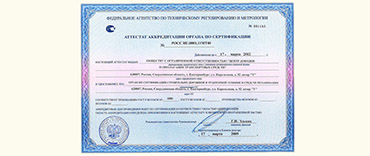When making changes to the design of the vehicle (re-equipment), the owner, as a rule, misses one very important point - the preservation of the transverse static stability of the car. Most often, this happens when replacing the vehicle's superstructure or interfering with its chassis. The stability of a moving car depends on the following factors: the mass of the car, the height of its center of gravity, the base, the width of the track; tire size, design and condition; the radii of curvature of the road and the state of its surface; design and condition of brakes; speed and direction of motion; the ability to drive.
It is established that the higher the center of gravity of the car and the higher the track, the higher the probability of overturning. To increase stability, the track should be as wide as possible, and the center of gravity should be lower. The presence of cargo in the body, especially the large, increases the height of the center of gravity, thereby reducing the stability.
The condition for maintaining the equilibrium of a stationary or evenly moving car on a slope or slope is the passage of the gravity vector inside the support area of the car.
As the car is loaded, the center of gravity is mixed up, so that even a slight slope of the road can lead to a loss of stability.
Transverse stability is the ability of a car to travel on roads of various qualities without tipping over.
The method of determining the angle of static transverse stability of a vehicle is regulated by the interstate standard GOST 31507-2012 "Motor vehicles. Manageability and sustainability. Technical requirements and test methods ".
The method consists in that the test vehicle is mounted on the supporting surface of the tilting platform in such a way that its longitudinal axis is parallel to the axis of rotation of the platform. The steered wheels of the vehicle must be in a position corresponding to straight running. The parking brake must be switched on. The platform is tilted to the angle at which the wheels of one side of a single vehicle are detached from the support surface. This value is taken as ασ-angle of the static transverse stability of the vehicle.
The requirements for the static transverse stability of the vehicle are set out in paragraph 4.2. Appendix No. 3 to the technical regulations of TR TS 018/2011.
Requirements for the transverse static stability of a vehicle in rollover tests for vehicles of categories M, N, O (for category M1 - only for vehicles of category G), for categories M2 and M3. To the semitrailers, the requirements are applied when they are found in a road train.
The requirements for the transverse static stability of a vehicle for the installation of equipment for supplying the engine with gaseous fuels (compressed natural gas - CNG, liquefied petroleum gas - LPG) for vehicles of categories M2 and M3 (buses) are set out in clause 8 of Annex 9 to the technical regulation TR CU 018/2011.
item 8.3. Transverse static stability of vehicles of categories M2 and M3 shall be provided in accordance with the requirements of subparagraph 4.2 of Annex 3 to this technical regulation in case of installation of gas cylinders on the roof. It is allowed to increase the overall height of the vehicle.
The requirements for static lateral stability of tanks carrying dangerous goods are set out in No. 9.7.5 of ADR 2017.
9.7.5.1. The total width of the support area on the ground (the distance between the outer points of contact with the ground of the right and left tires of one axis) shall be at least 90% of the height of the center of gravity of the loaded tank truck. In the case of articulated vehicles, the load on the axle of the structural member of a laden semi-trailer shall not exceed 60% of the nominal gross mass of the entire articulated vehicle in a loaded condition.
9.7.5.2 Tankers with built-in tanks of more than 3 m3 capacity intended for the transport of dangerous goods in liquid or molten state, tested at a pressure of less than 4 bar, shall comply with the technical requirements of ECE Regulation No. 111 on transverse stability, as amended, with observance of the terms of application specified in them. These requirements apply to road tankers, first registered since July 1, 2003.
Requirements for the static transverse stability of mixing-charging machines are set out in No. 9.8.4 of ADR 2017
The total width of the support area on the ground (the distance between the outer points of contact with the ground of the right and left tires of one axis) should be at least 90% of the height of the center of gravity of the laden vehicle. In the case of articulated vehicles, the load on the axle of the load-bearing structure of the laden semi-trailer shall not exceed 60% of the nominal total mass of the entire articulated vehicle in the loaded
This is important




